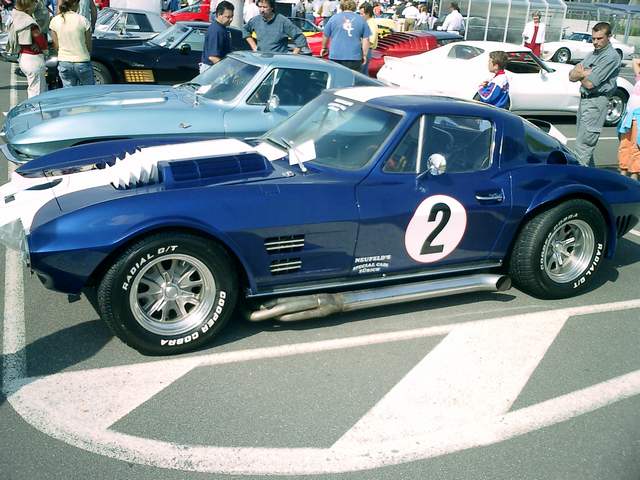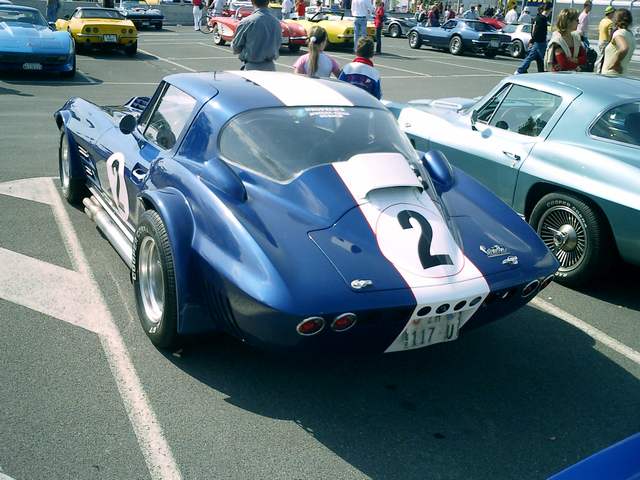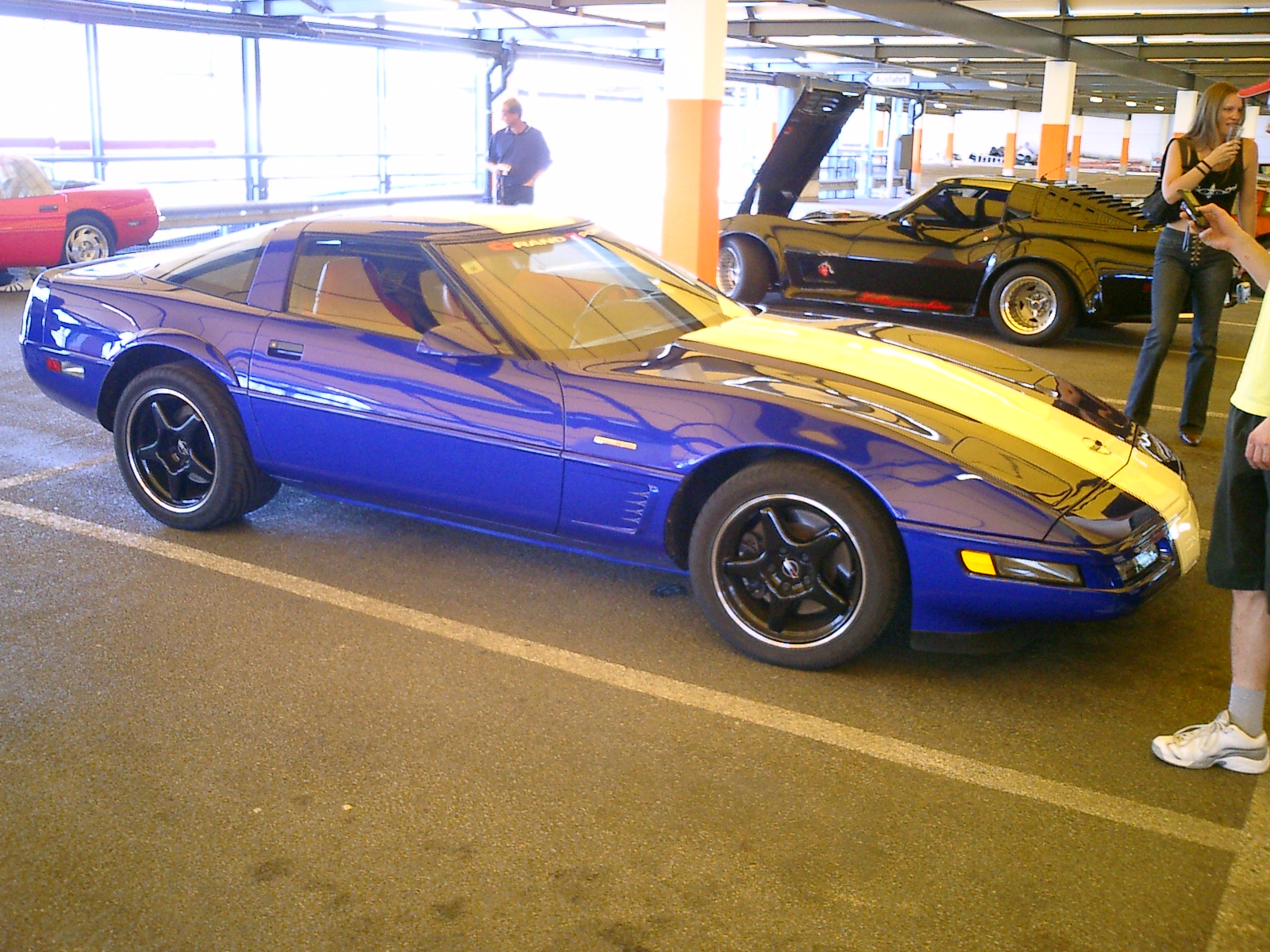
In 1963, the first year of the
Sting Ray model, Zora Arkus-Duntov designed the Grand Sport in a
secret project as Chevrolet's performance answer to the Ford Cobra
for endurance and GT racing. Only five examples were built, three
coupes and two roadsters, when the GM Chairman, Frederic Donner,
killed the Grand Sport Project. Although Chevrolet would not produce
any more cars, Arkus-Duntov reasoned they could loan finished cars
to others to race. And so they did.
The Grand Sports
were lightweight redesigns that took advantage of 1962 FIA international
racing rule changes that did away with engine displacement limits
for competition in the World Manufactuers Championship. Arkus-Duntov
intended to build more than 100 Grand Sports so they could qualify
for production car homologation. The car was new from the ground
up. Designers wanted to drop 1,000 pounds from the String Ray's
weight. From the tube frame to the 0.04 inch-thick fiberglass body,
everything was light. The 377 c.i. aluminum alloy casting small
block, based on a 327, would save at least 75 pounds alone.

The top speed of
the Grand Sport is near 180 mph. Penske once said, "It was
so light in the front end that when you really stood on the gas,
the front end would come off the ground like a dragster." Guldstrand
showed how easily this could be done at Sebring in 1966 when
his roadster front wheels came off the ground at 150 mph.
All five original Grand Sports still exist.
33 years later...
Chevrolet engineers decided to give them a little something special
rather than the standard 300hp 350 LT-1's found on standard Corvette's
of the year 1996.

Enter the 350ci LT-4. Conservatively rated at 330hp @ 5800 rpm, the
engine get's it's extra kick from a more aggressive camshaft, high
flow aluminum heads, larger valves, higher compression pistons, high
flow injectors and roller rocker arm's, redline is set at 6300 rpm
and get's it's maximum torque of 340 lbs @ 4500 rpm.
|